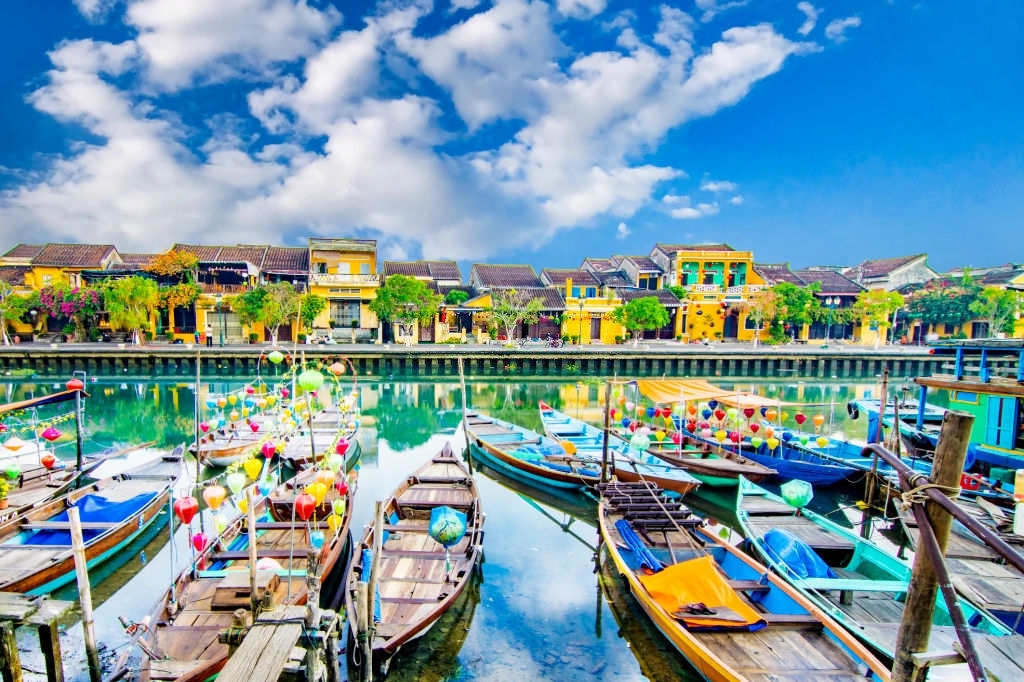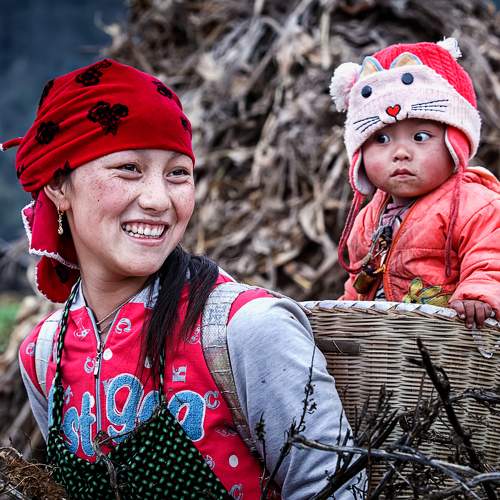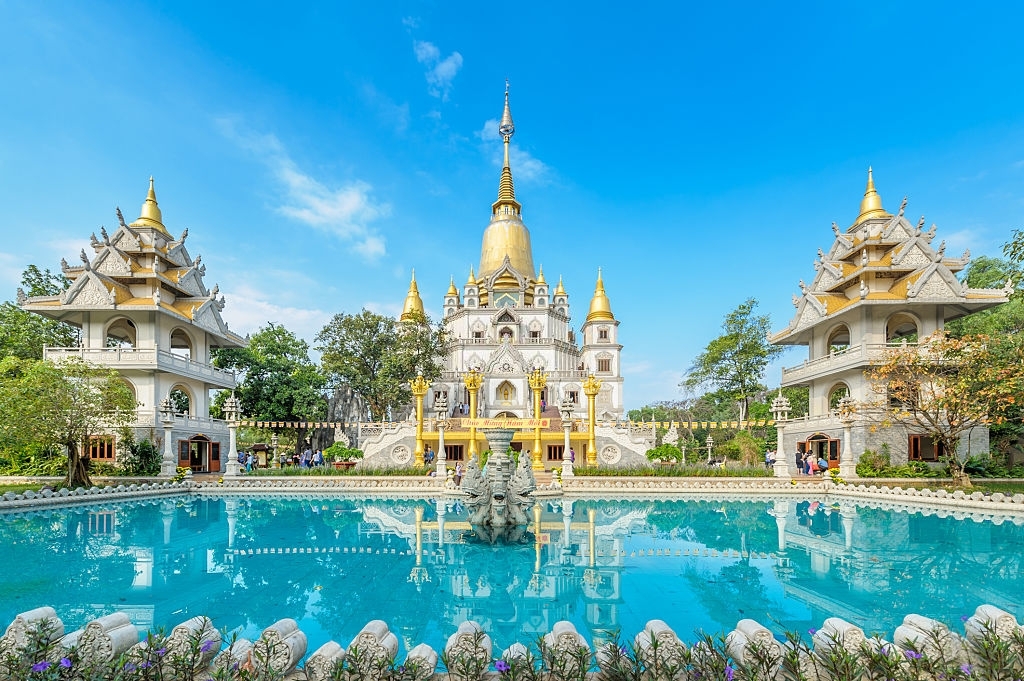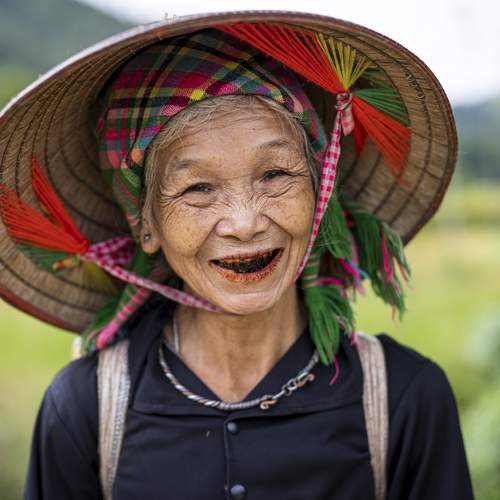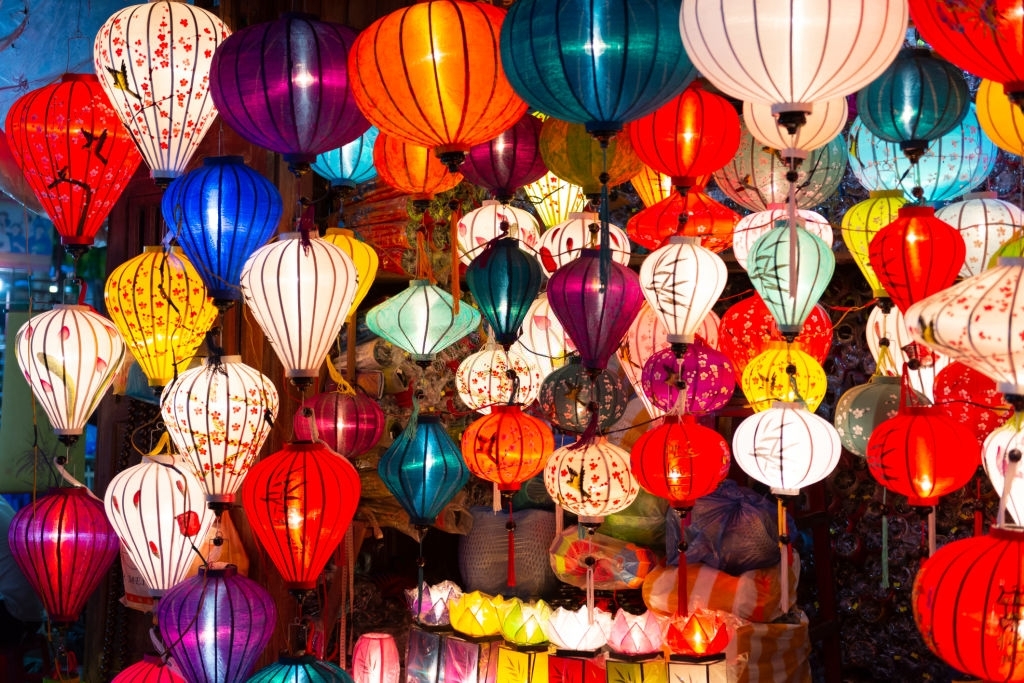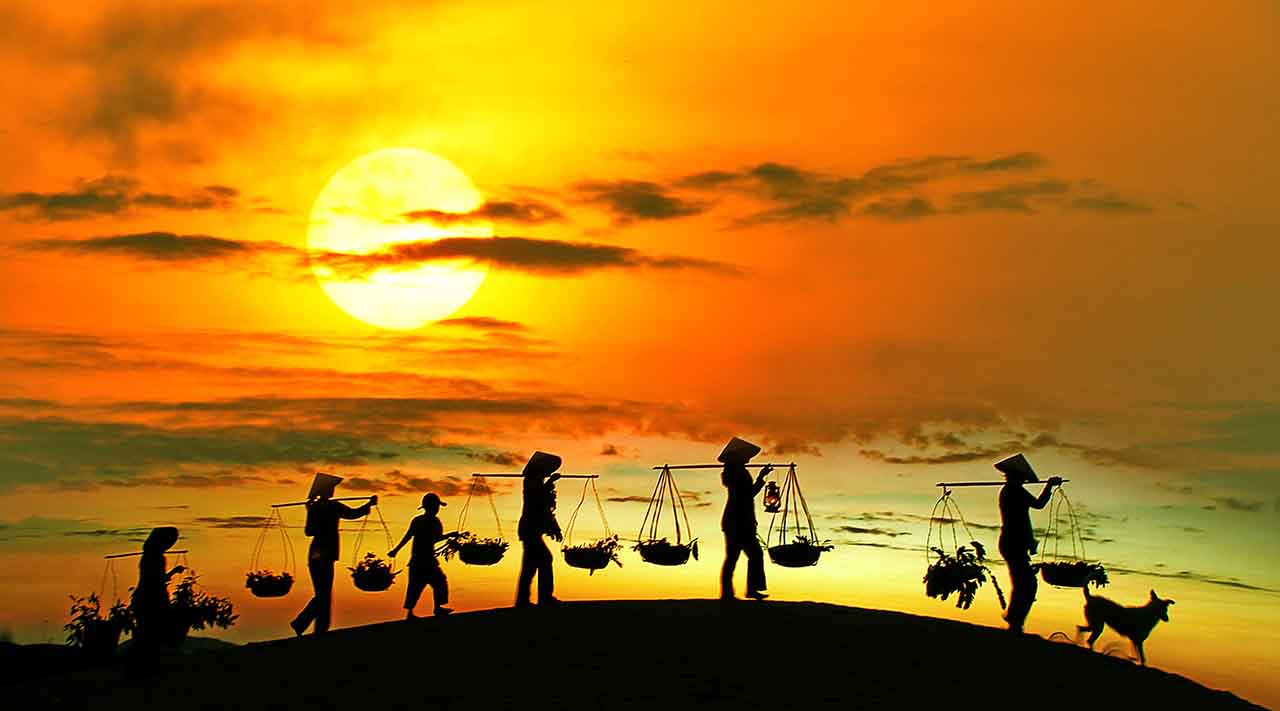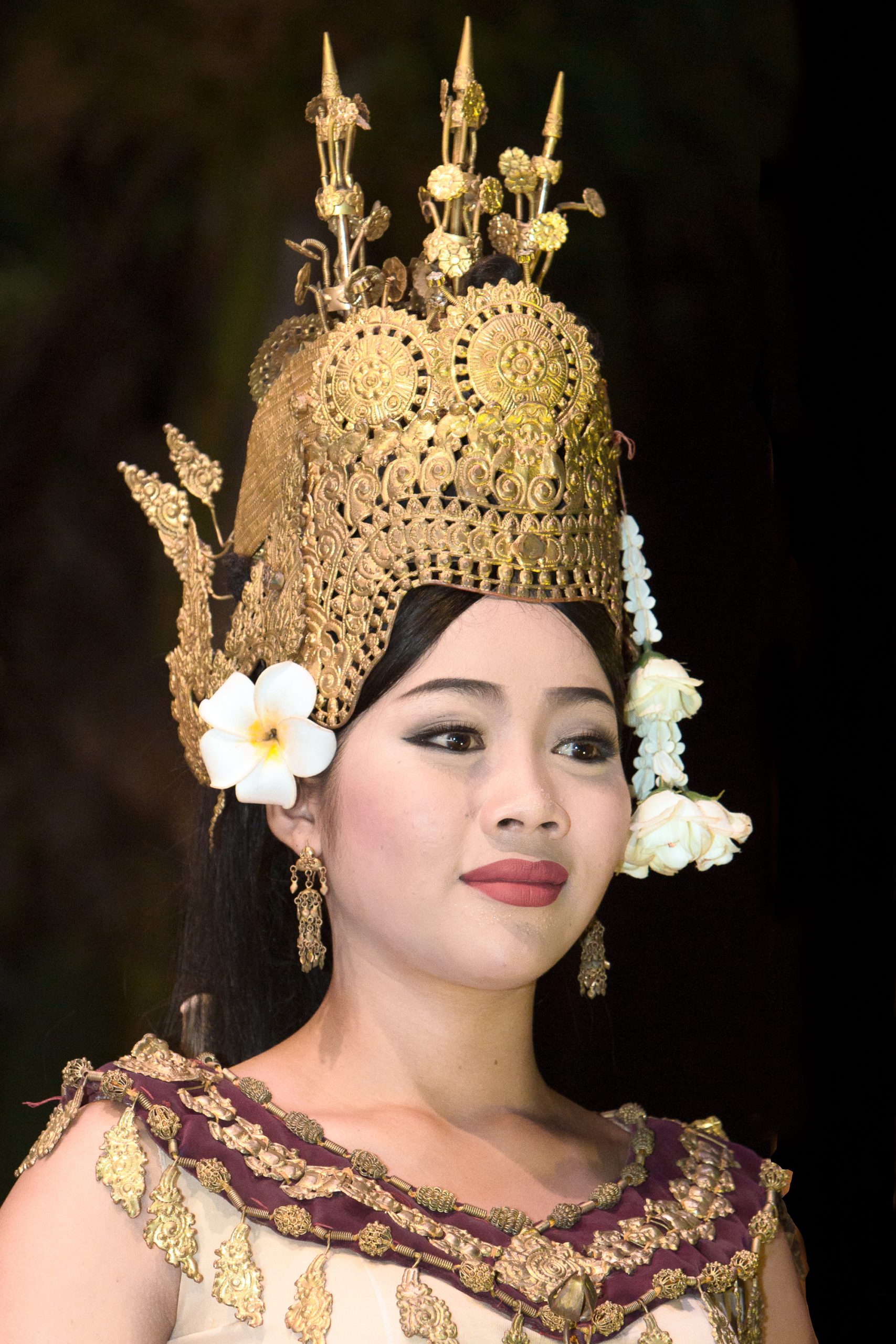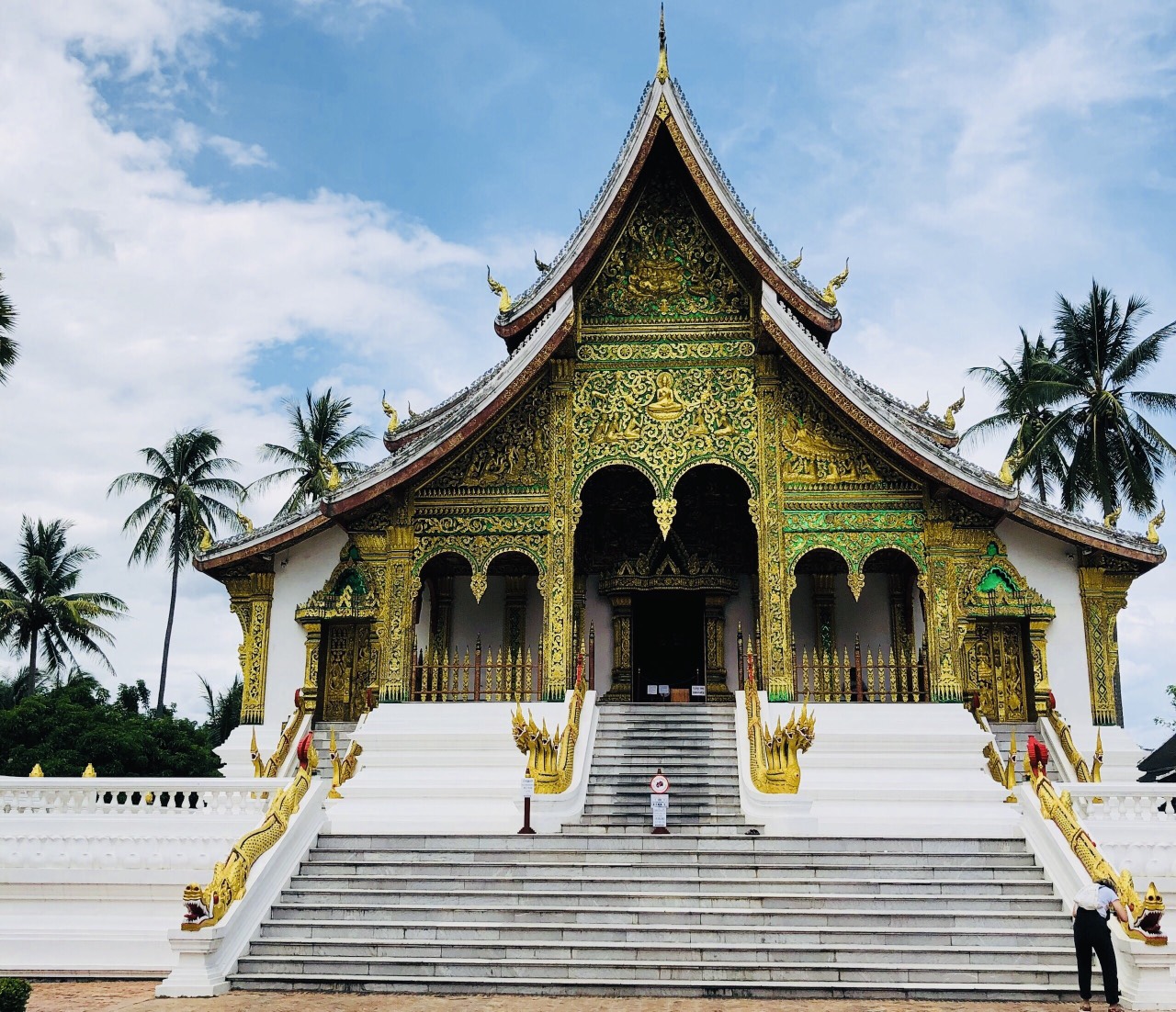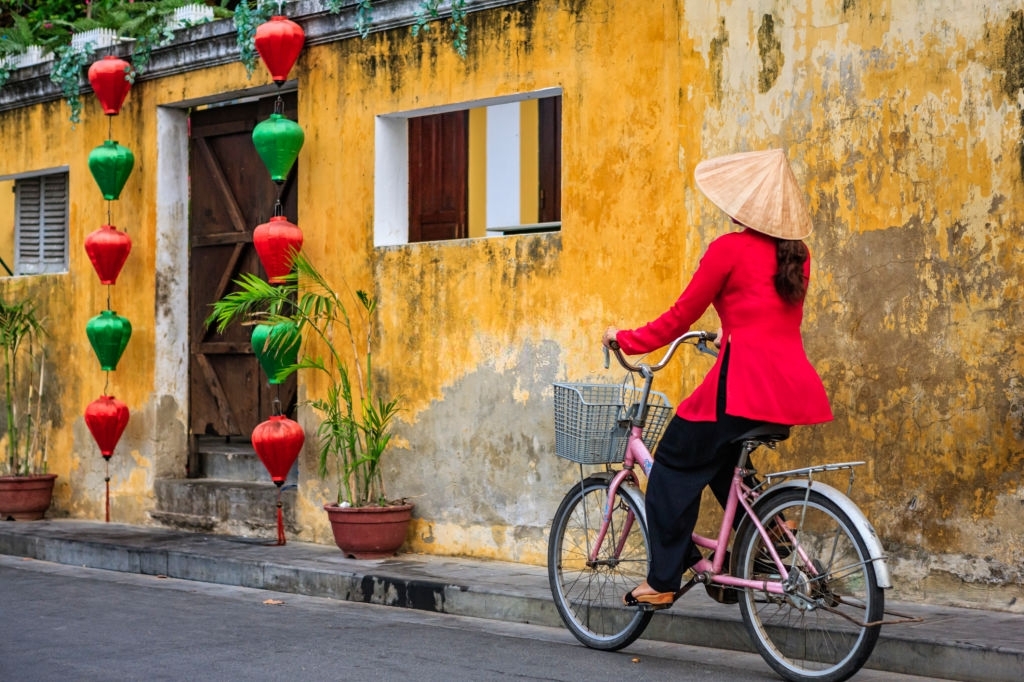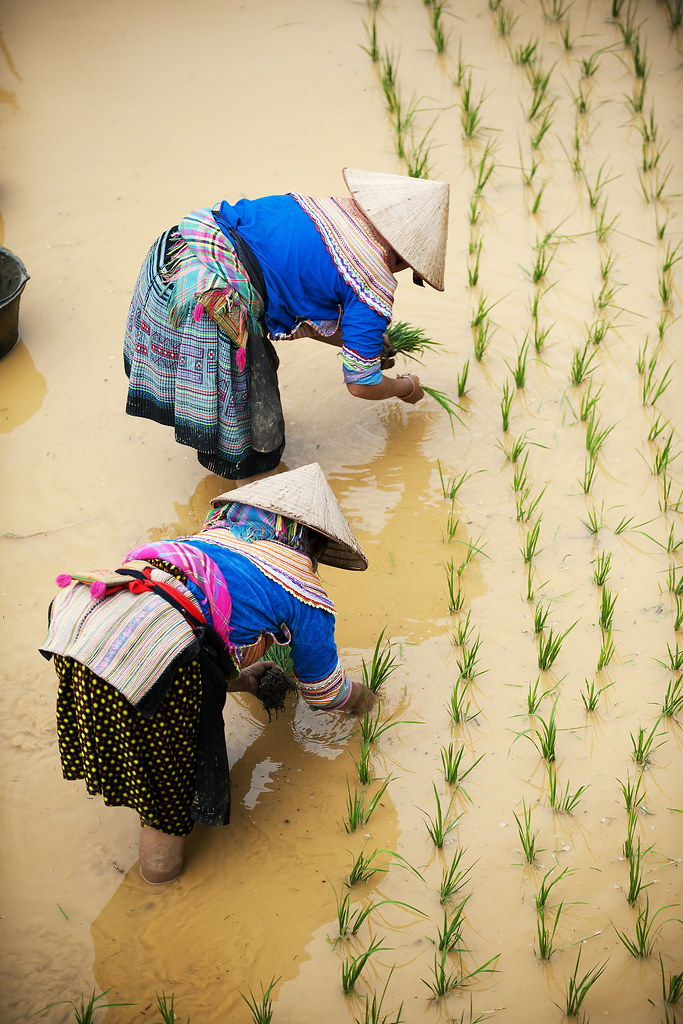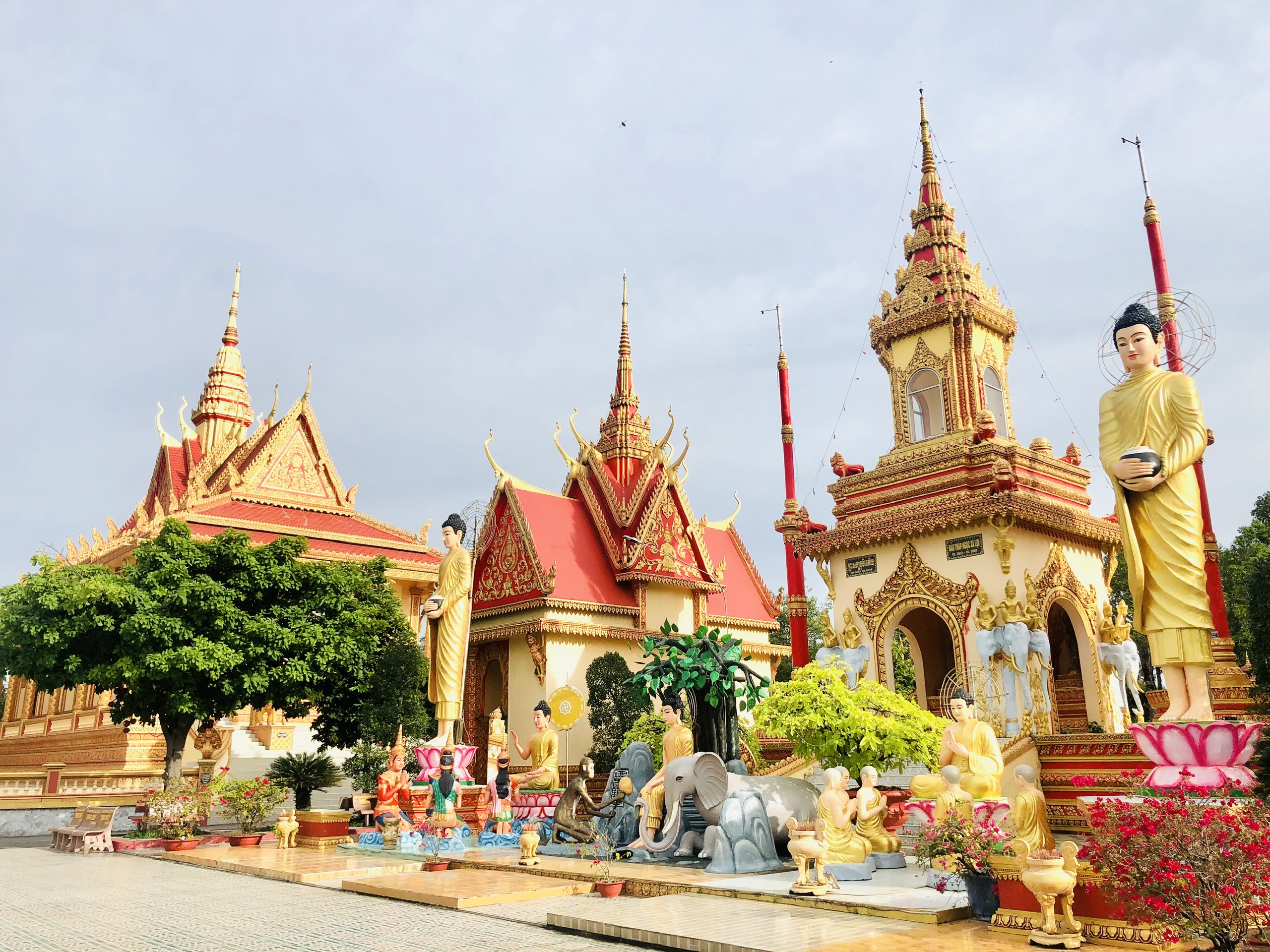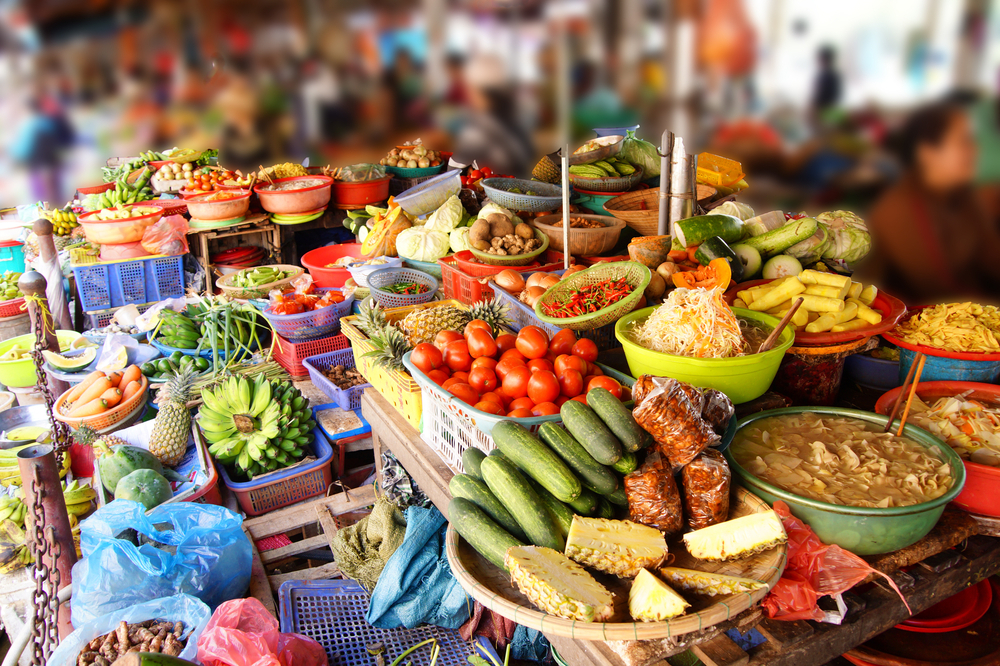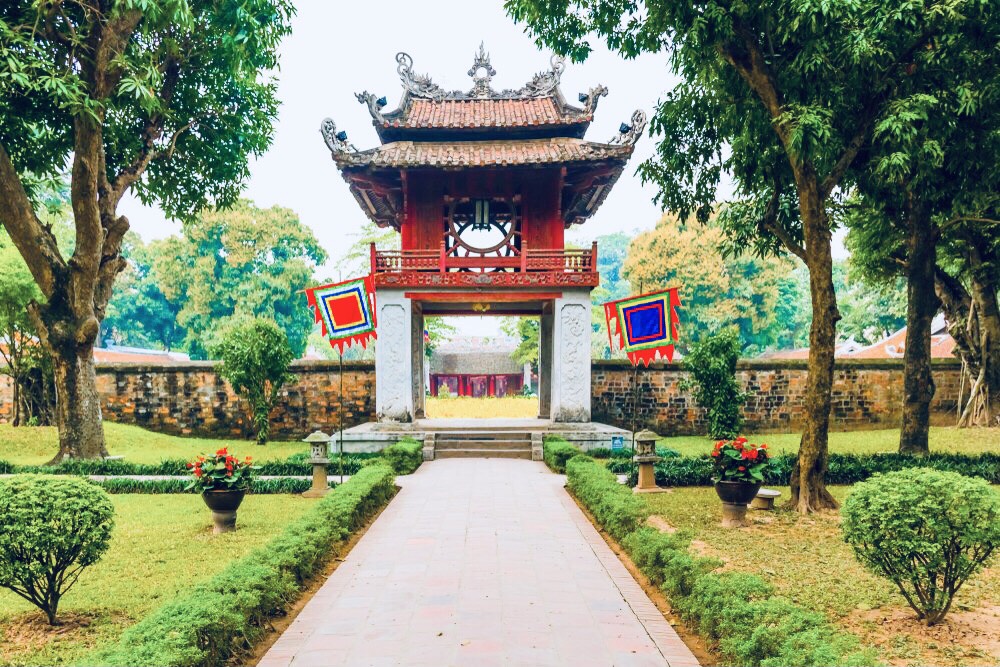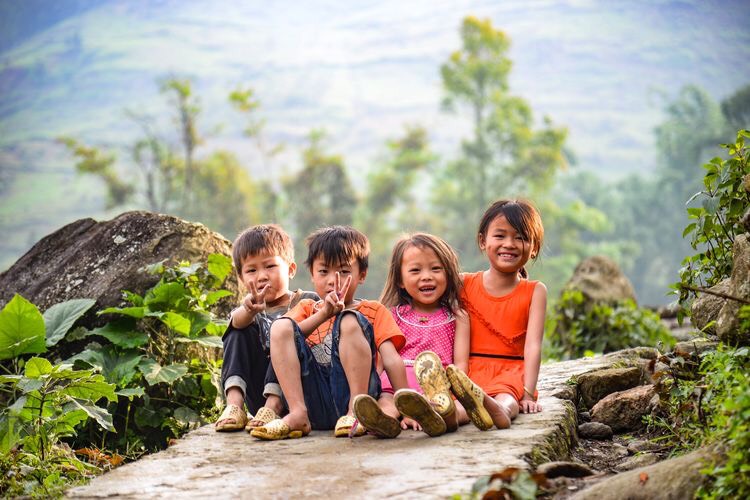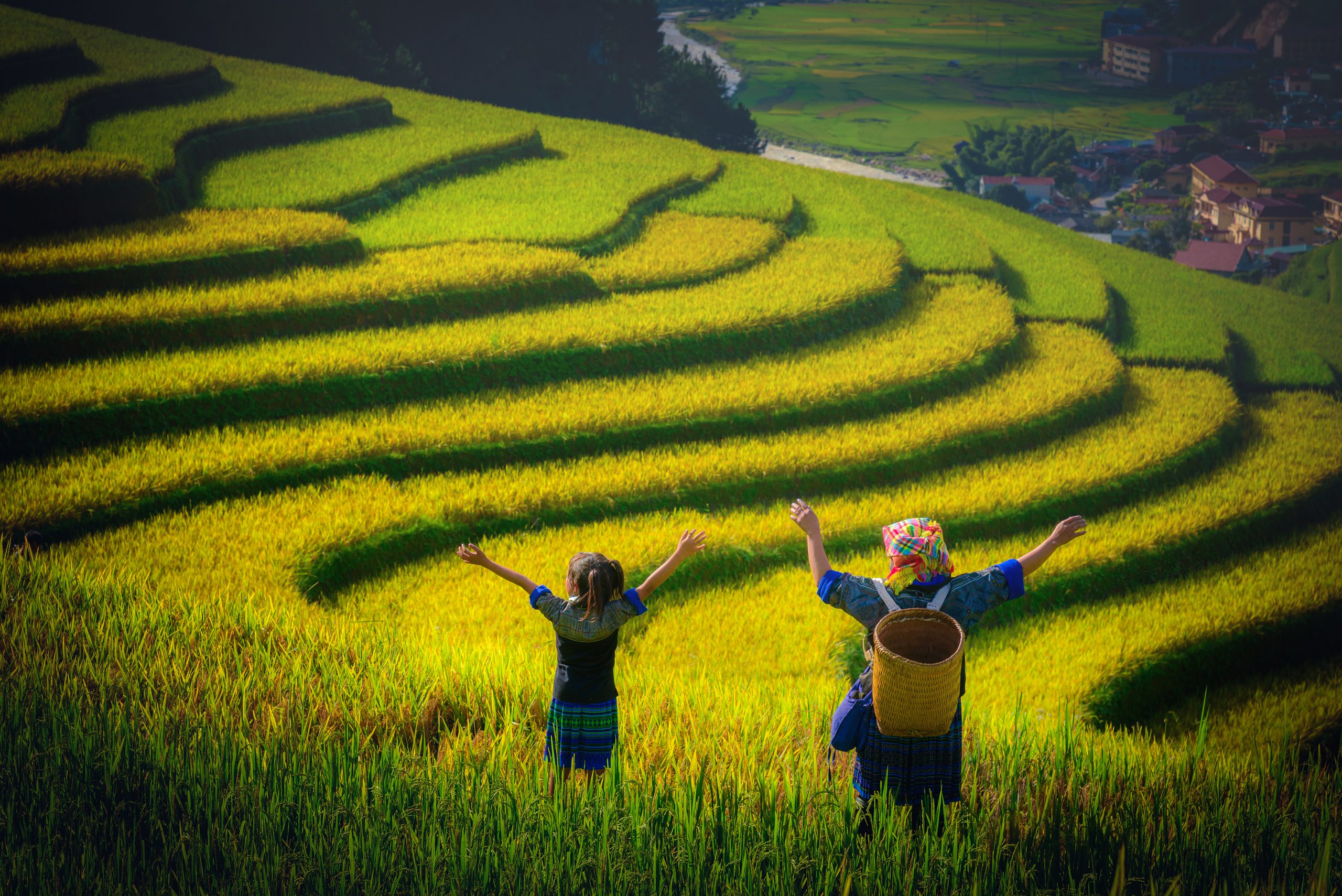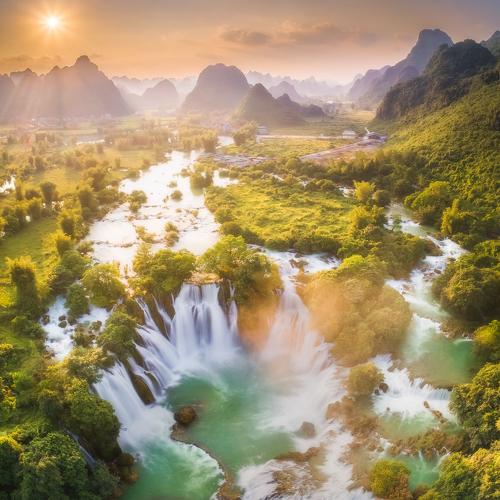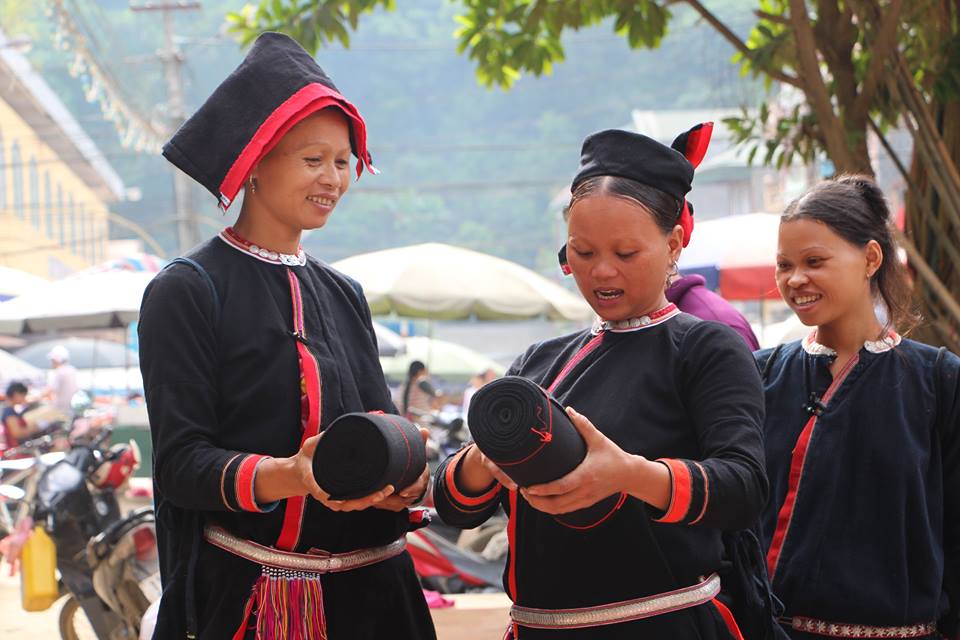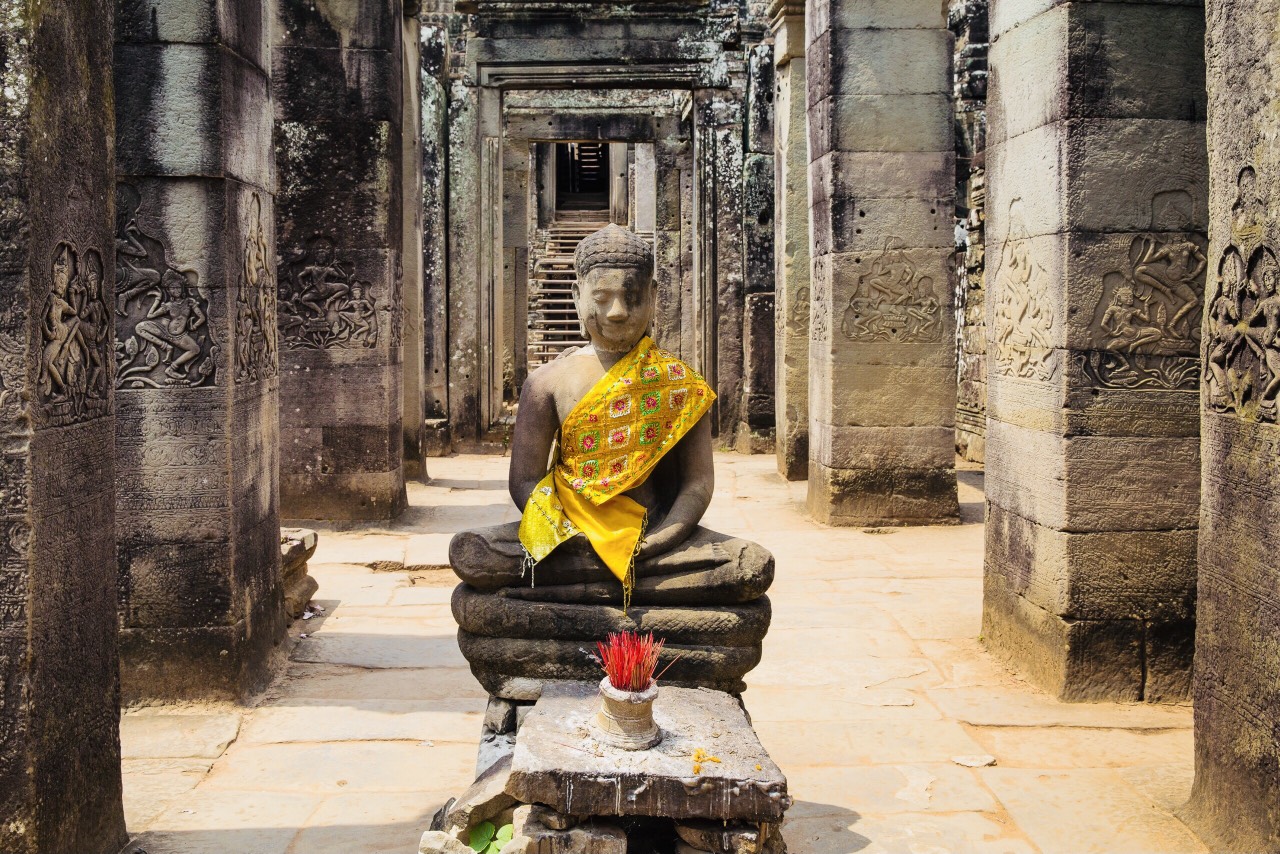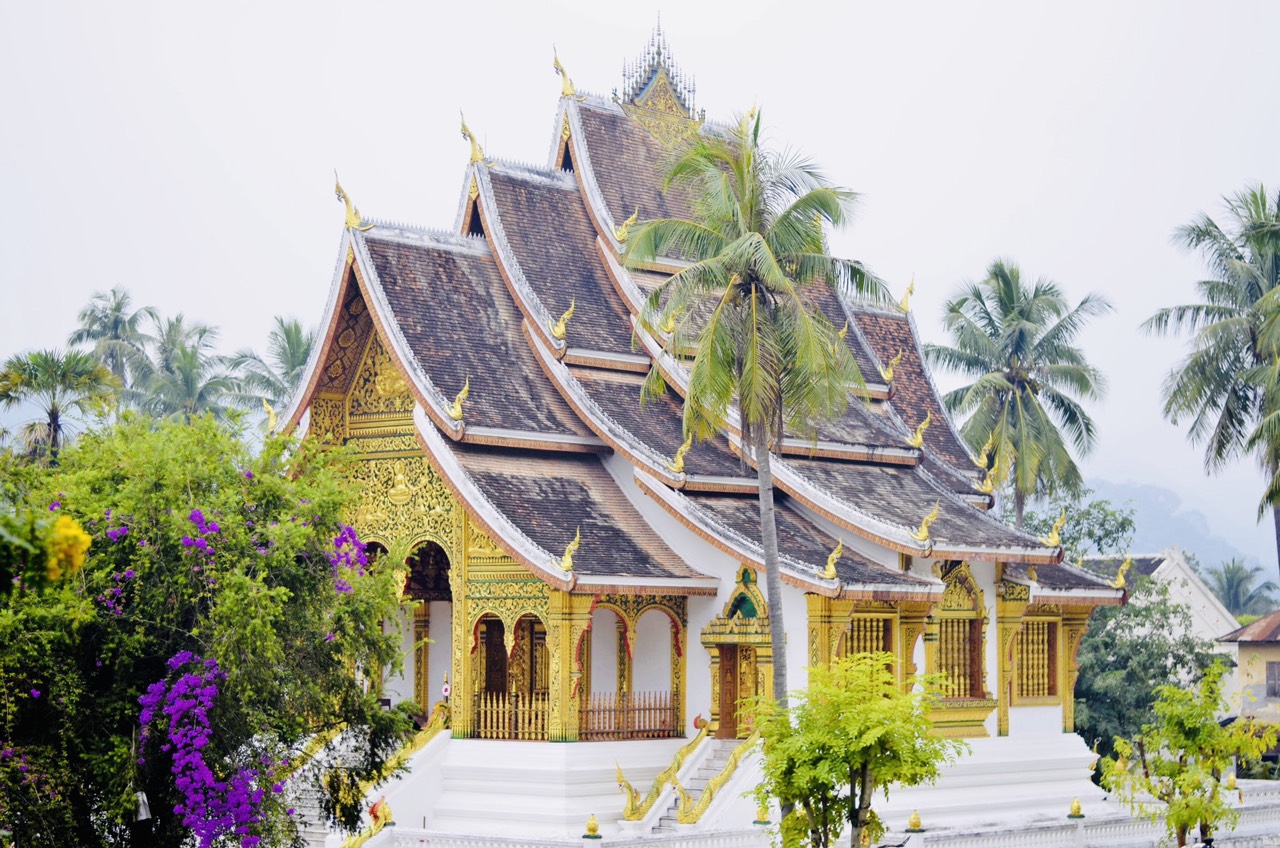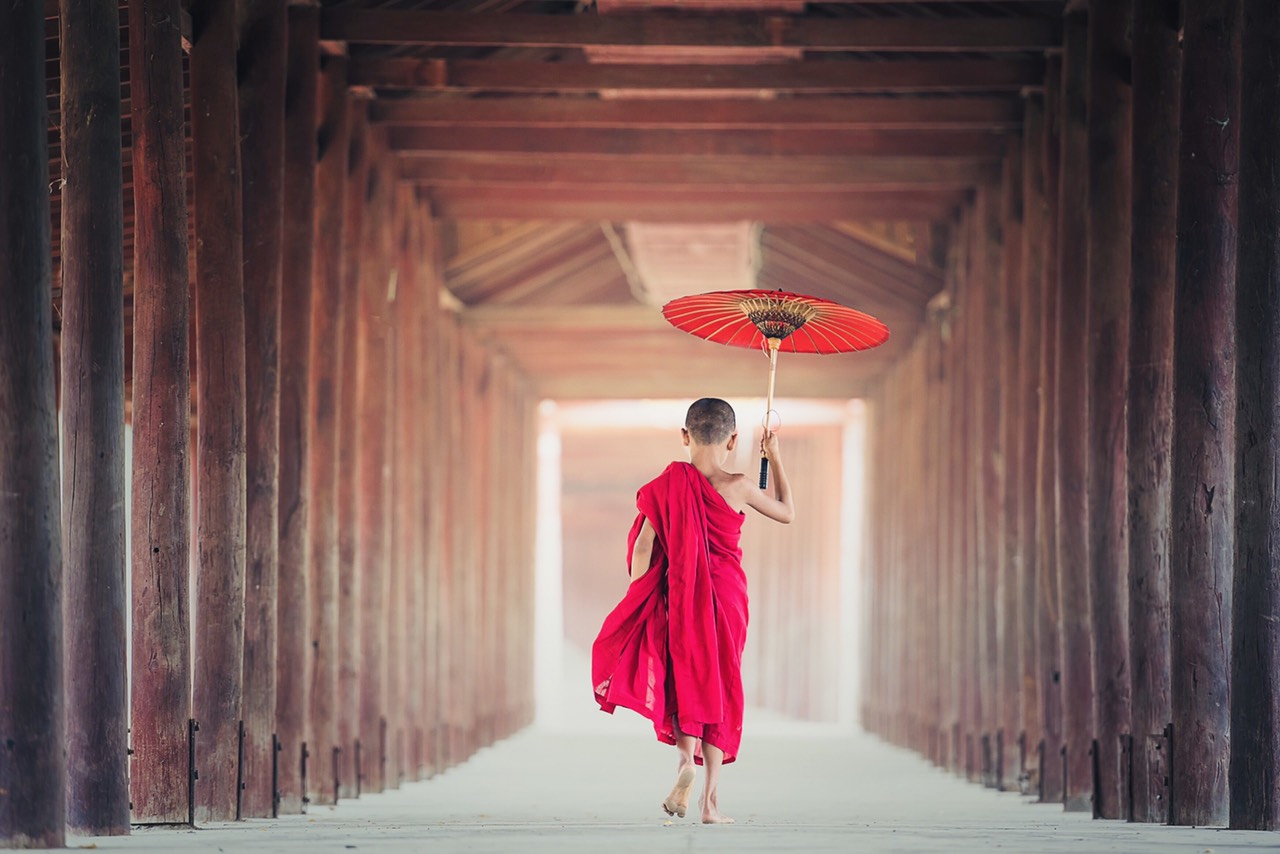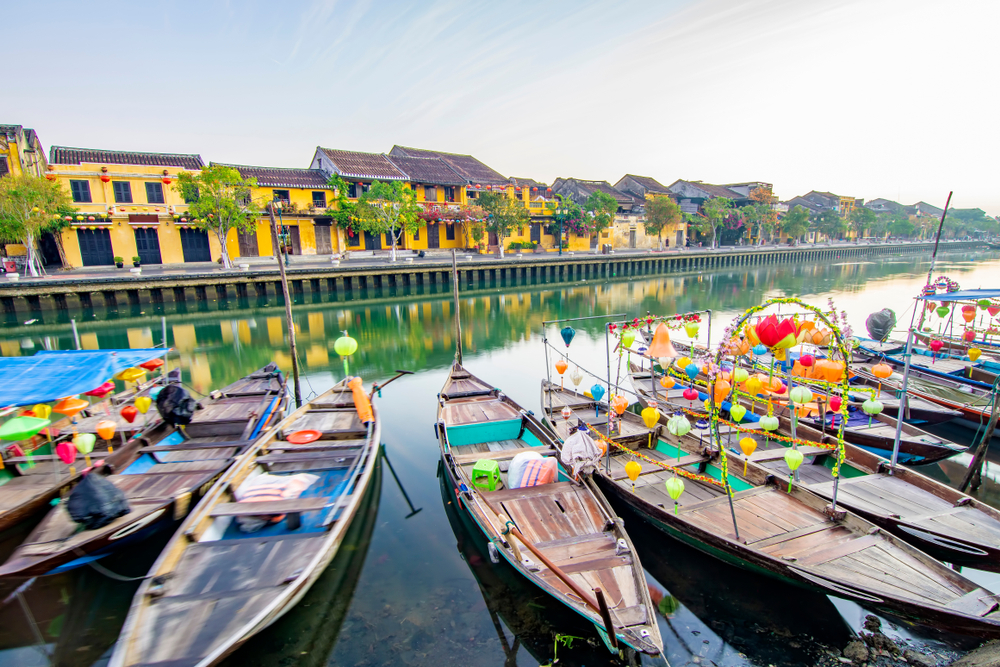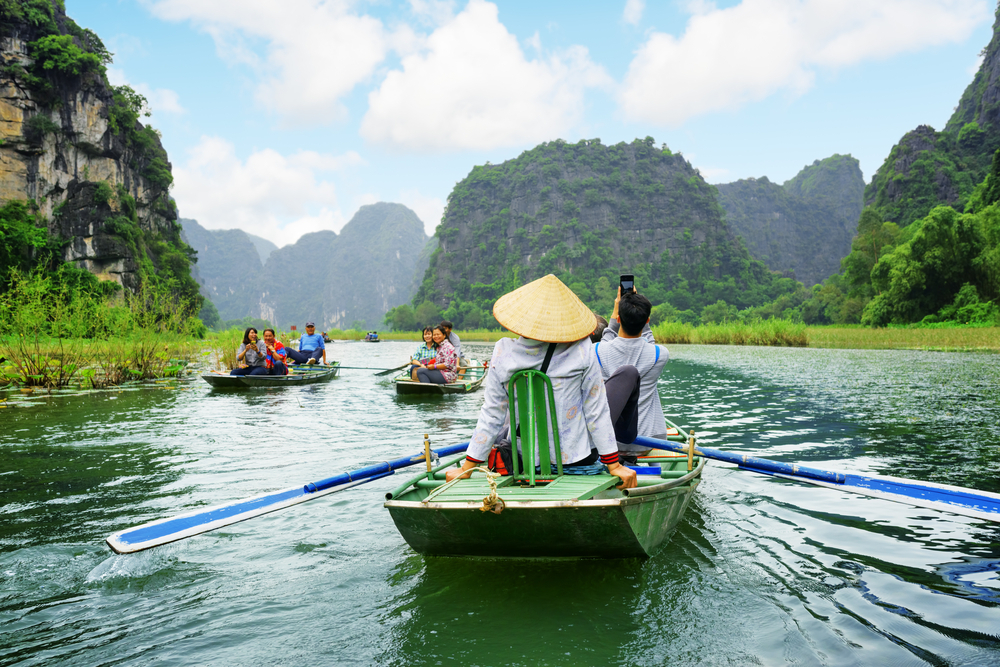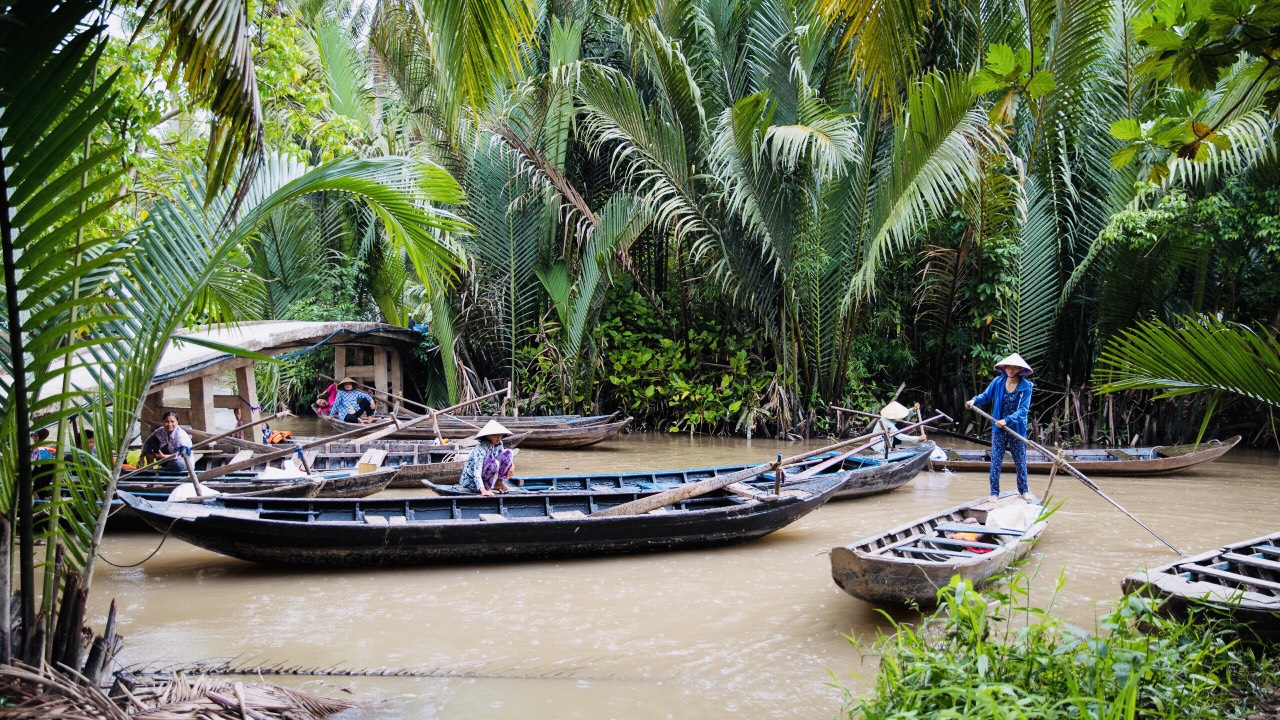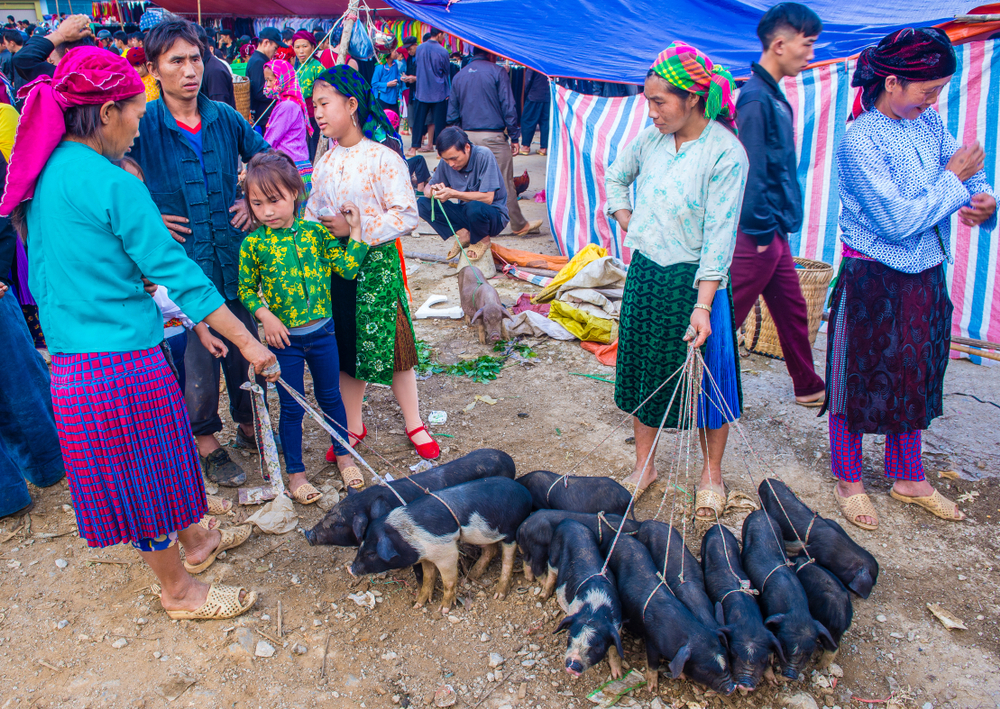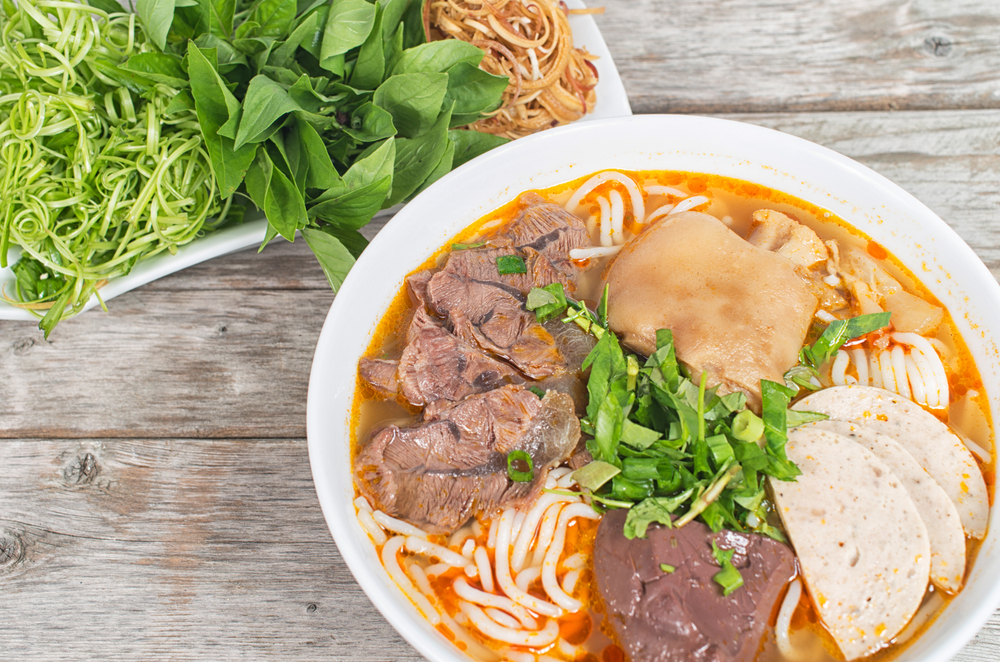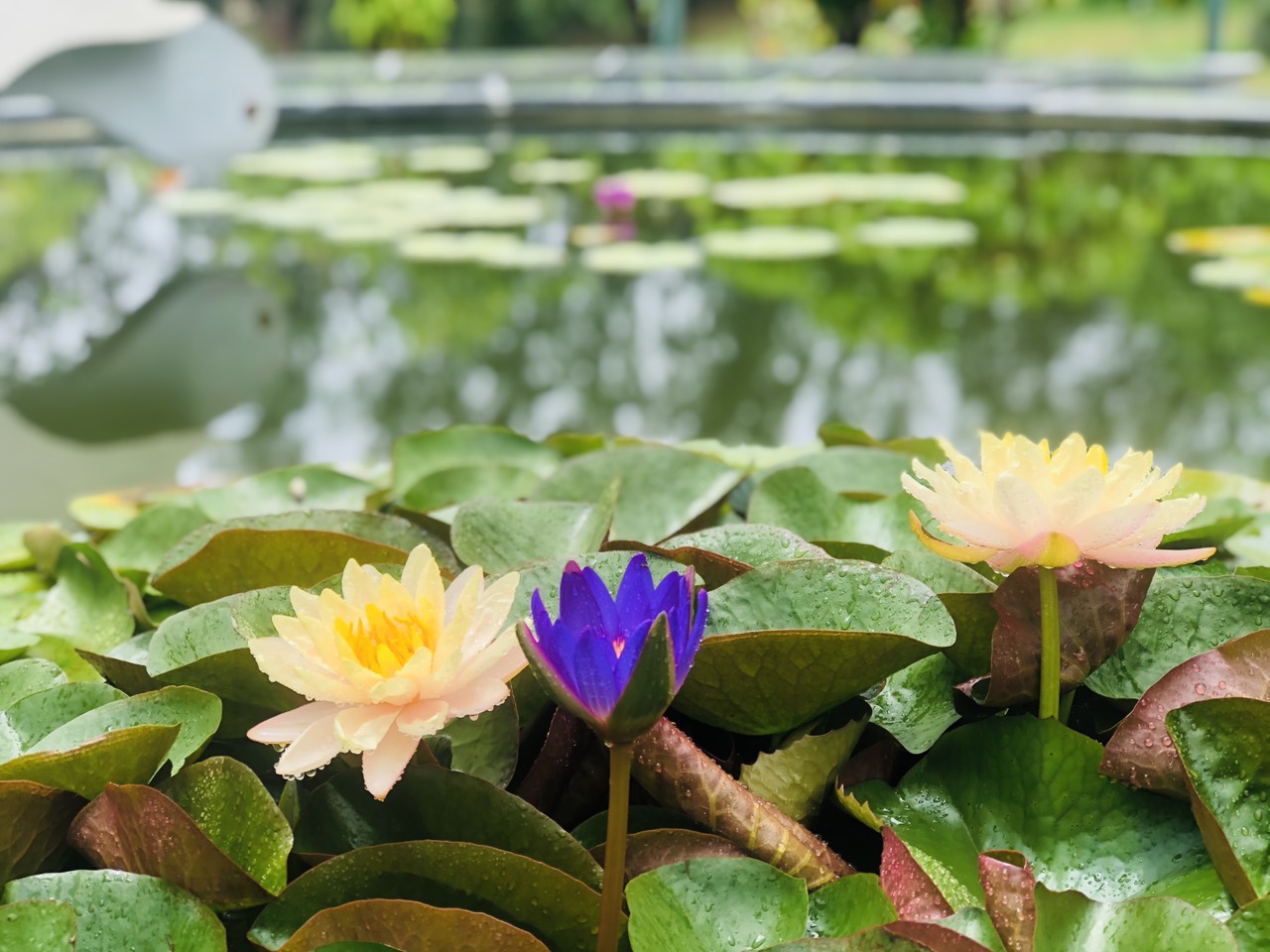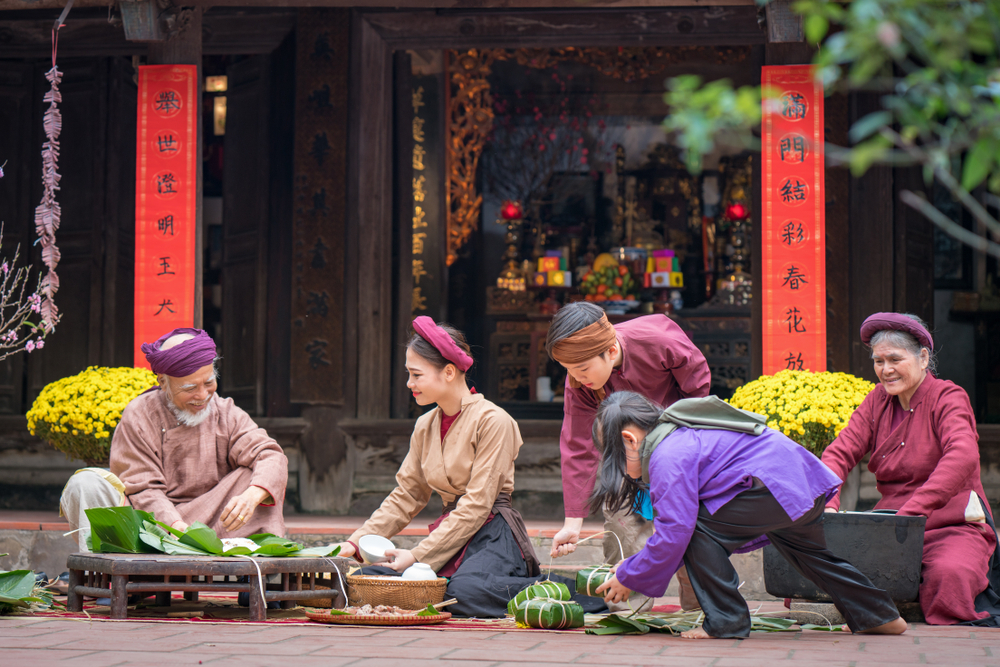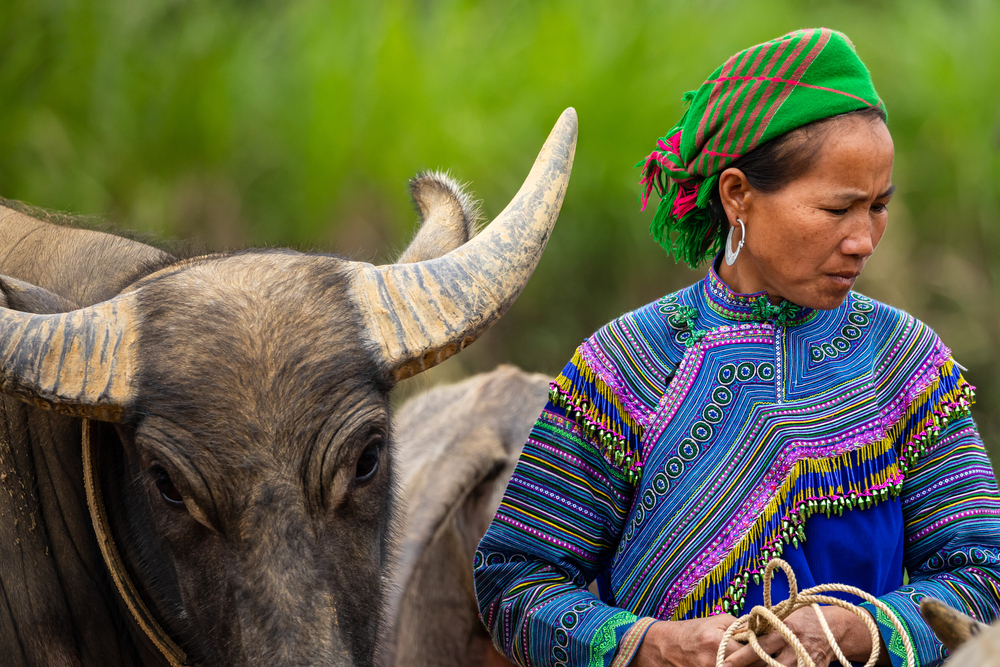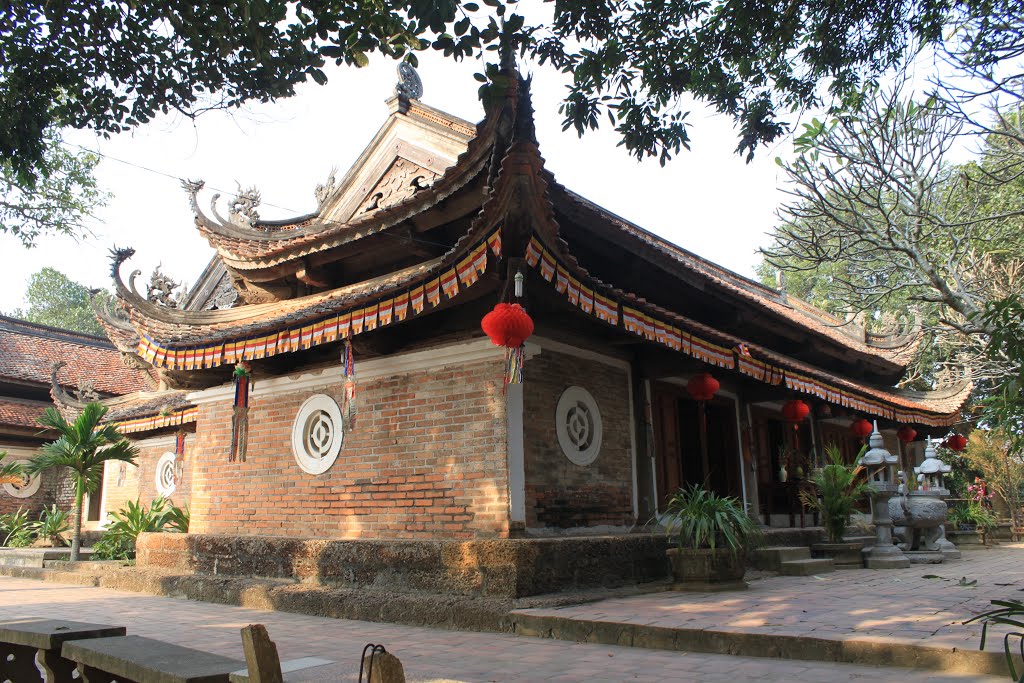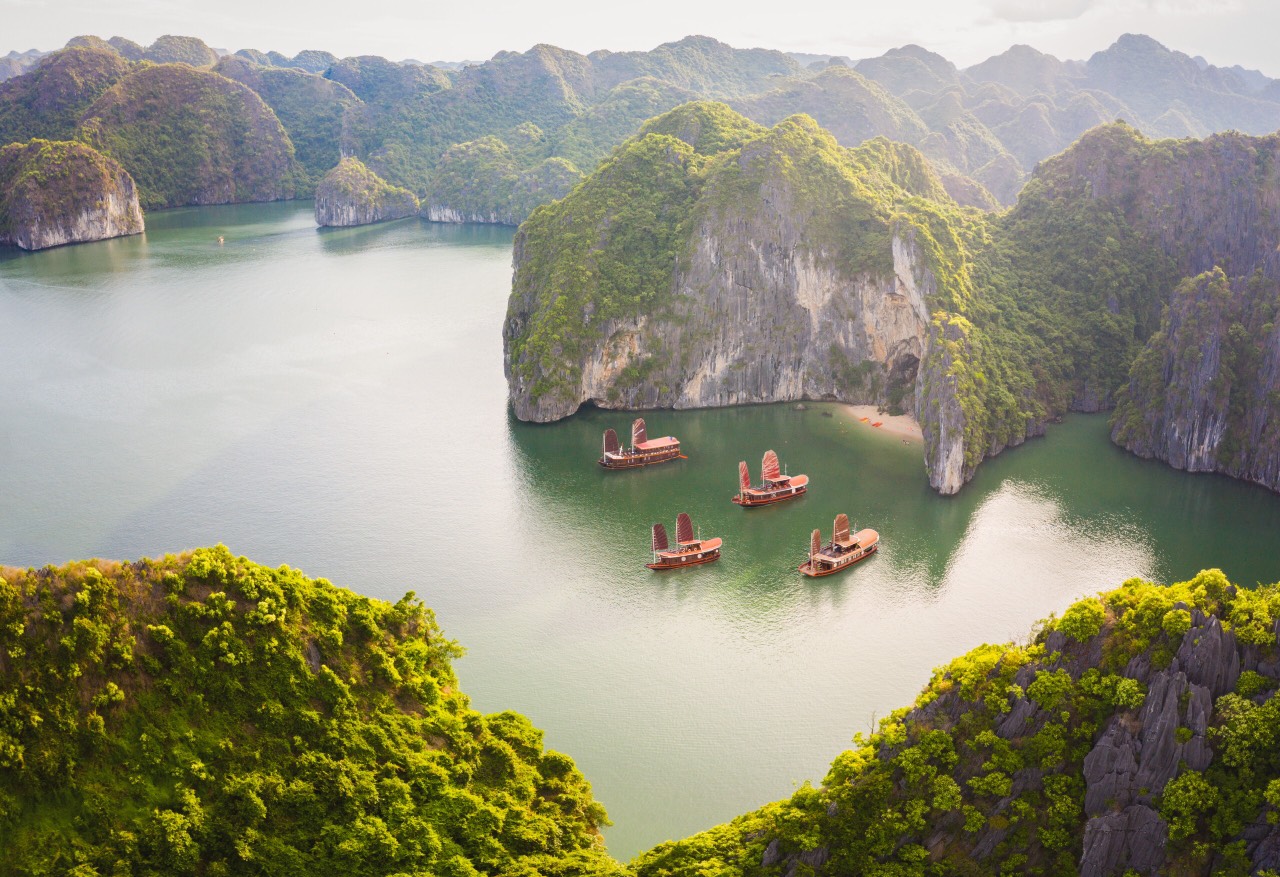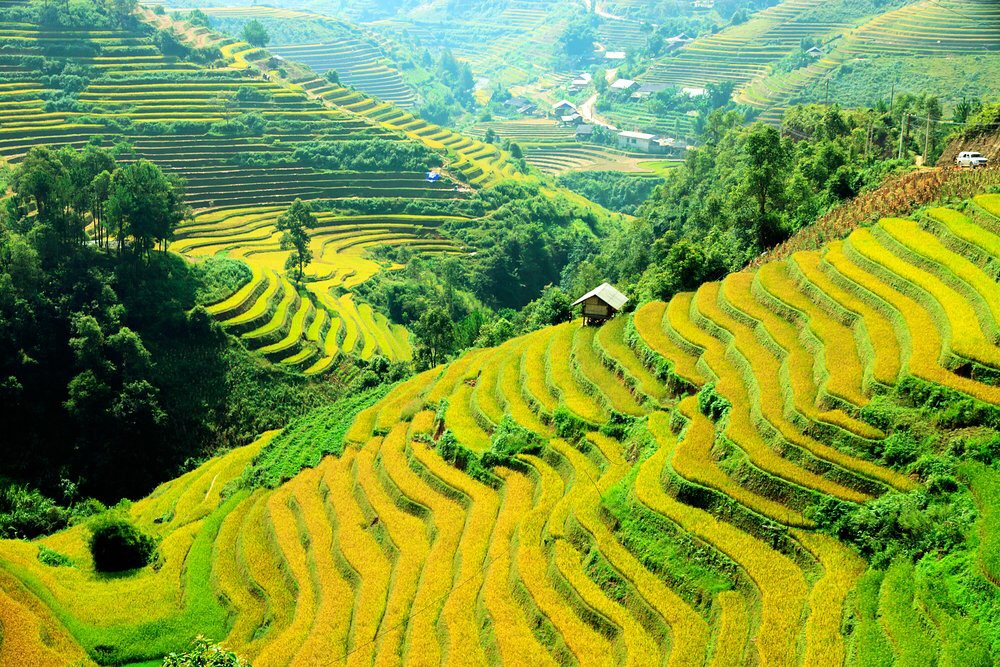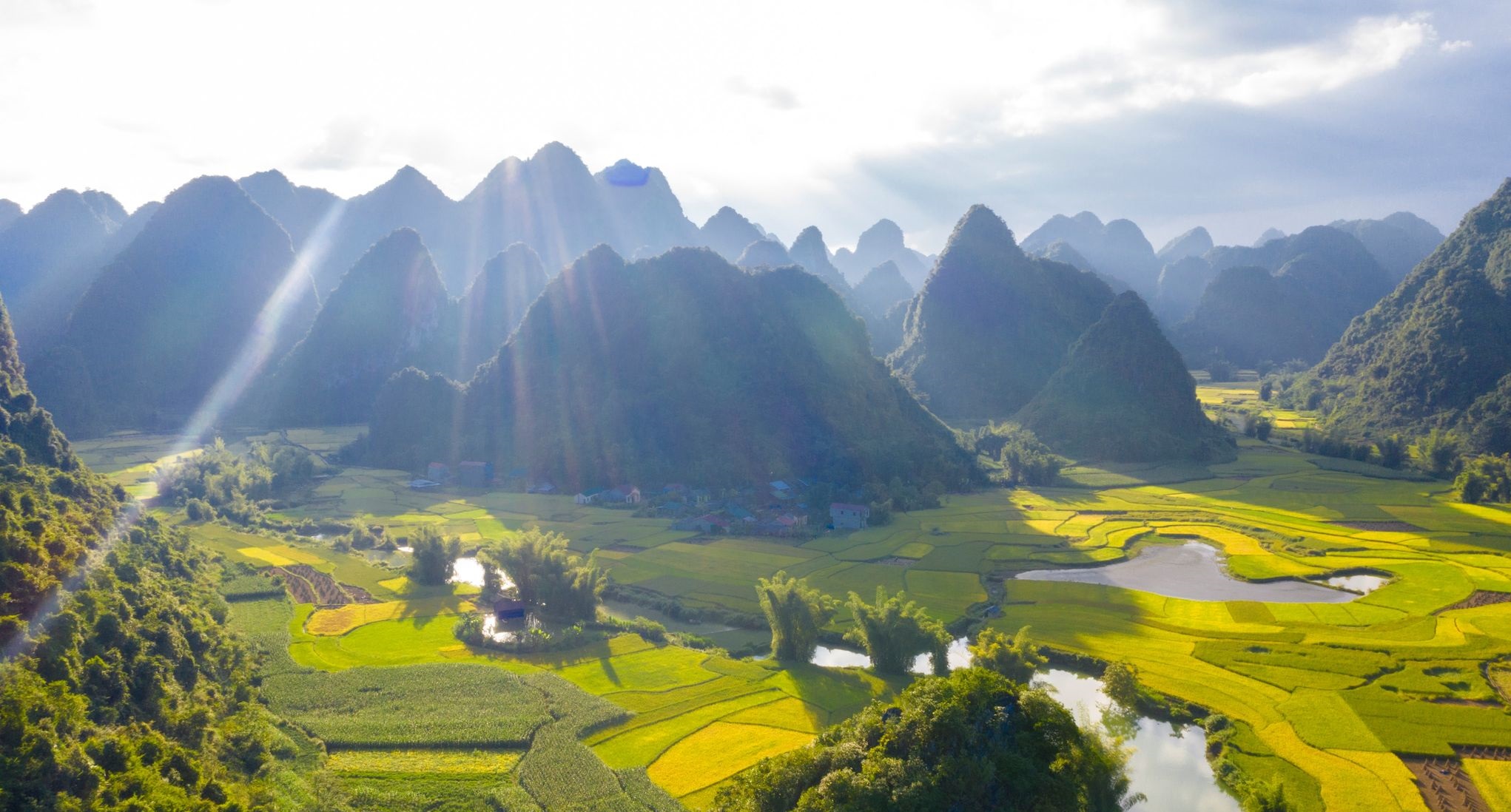
Less known than Sa Pa and Ha Giang, Cao Bang is an incredible region that offers many beautiful and wild landscapes, a destination off the beaten tracks.
Located more than 300 km from Hanoi, Cao Bang is a mountainous province in the extreme Northeast of Vietnam. Its landscape is characterized by the presence of limestone mountains lined with thick vegetation, rice fields, gigantic waterfalls, small winding roads, etc… Unique encounters are possible with the many ethnic groups living in deep valleys and on mountain slopes far from the hustle and bustle of the world.
In this article, we inform you about the most interesting places in Cao Bang.
1. The waterfall of Ban Gioc
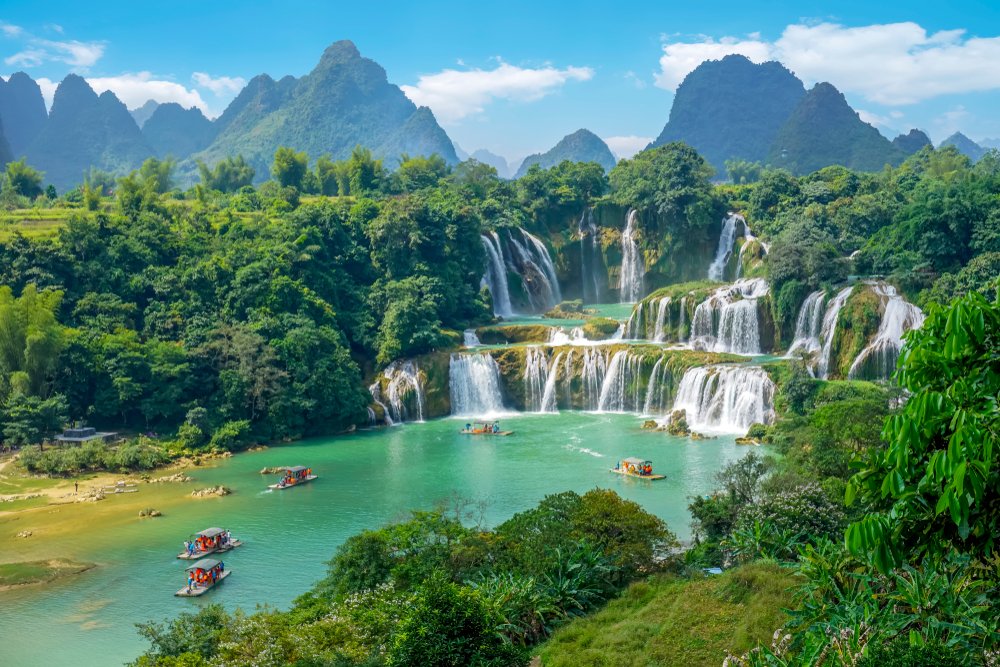
Ban Gioc, the water wall considered as the natural demarcation between China and Vietnam, is the fourth largest waterfall in the world located on a national border. The small waterfalls on the left side and half of the right side of the large waterfalls belong to Vietnam. The other half of the right side of Ban Gioc is Chinese. It is also the most majestic and impressive waterfall in Vietnam.
This natural wonder is more than 30 meters high and crosses many layers of limestone from where they cascade on three levels. At the highest level are the springs, at the second level the water has carved small basins, the largest part of the waterfall falls at the last level to finally join the Quay Son River. These three groups are separated by rocks and trees. It is in the middle of the two big groups that the border is located. The small falls on the left appear only during and just after the rainy season.
The best time to visit Ban Gioc is from August to October, when the water turns turquoise. This is also the harvest season. It is possible to take a short rafting trip on the Quay Son River to admire these spectacular landscapes.
2. The cave of Nguom Ngao
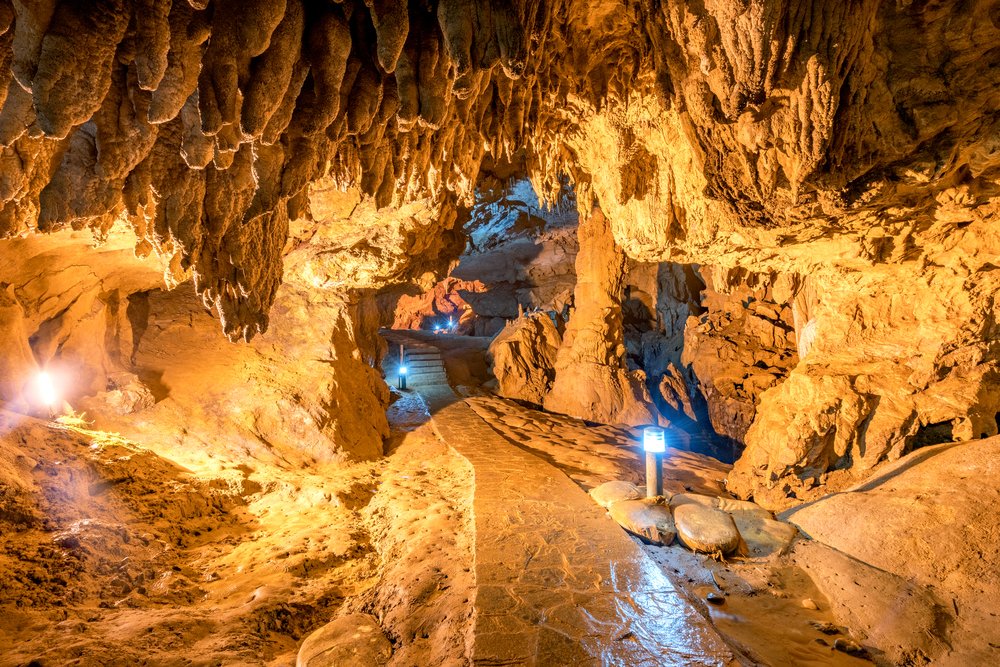
Magnificent cave by its size and its contents, discovered by the inhabitants in 1921, opened to the public in 1996, the cave of Nguom Ngao is one of the largest caves of the country. Beautifully lit, it offers a timeless walk between natural sculptures of great beauty. In Tay language, Nguom Ngao means “cave of tigers”, many tigers would have lived there according to the legend.
The cave extends over 2 km, with three main entrances, but only 1 km is accessible, a large part at the bottom of the cave is not yet to visit. Here you can see beautiful examples of stalactites and stalagmites of different shapes and sizes, some representing curious mythical creatures or magical scenes.
3. The Ngoc Con Valley
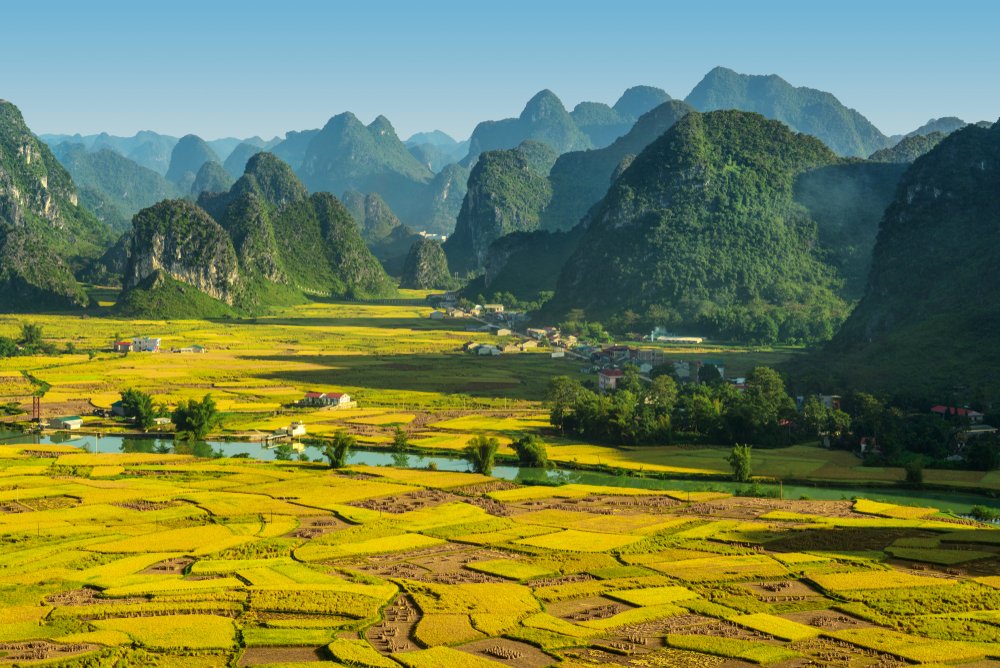
Ngoc Con, located in Trung Khanh district, is a sublime valley with huge rice fields surrounded by limestone mountains. It is the ideal place to go for a walk or a bike ride through endless rice fields in a peaceful, sublime setting. The best time to explore this valley is at sunset, when the clouds hover over the distant mountains, breathtakingly beautiful landscapes!
4. The market of Bao Lac

The Bao Lac market, a small local market nestled in the mountains, is held every 5 lunar days (5th, 10th, 15th, 20th, 25th, 30th). It is the meeting point of many ethnic groups in the region such as Hmong, Tay, Nung, Dao, San Chi, and especially the Black Lolo. Most of the people still wear brightly colored traditional clothes of which they are proud. A visit to this market allows you to meet the ethnic groups and to discover the local products and specialties.
5. One of the black Lolo village of Bao Lac
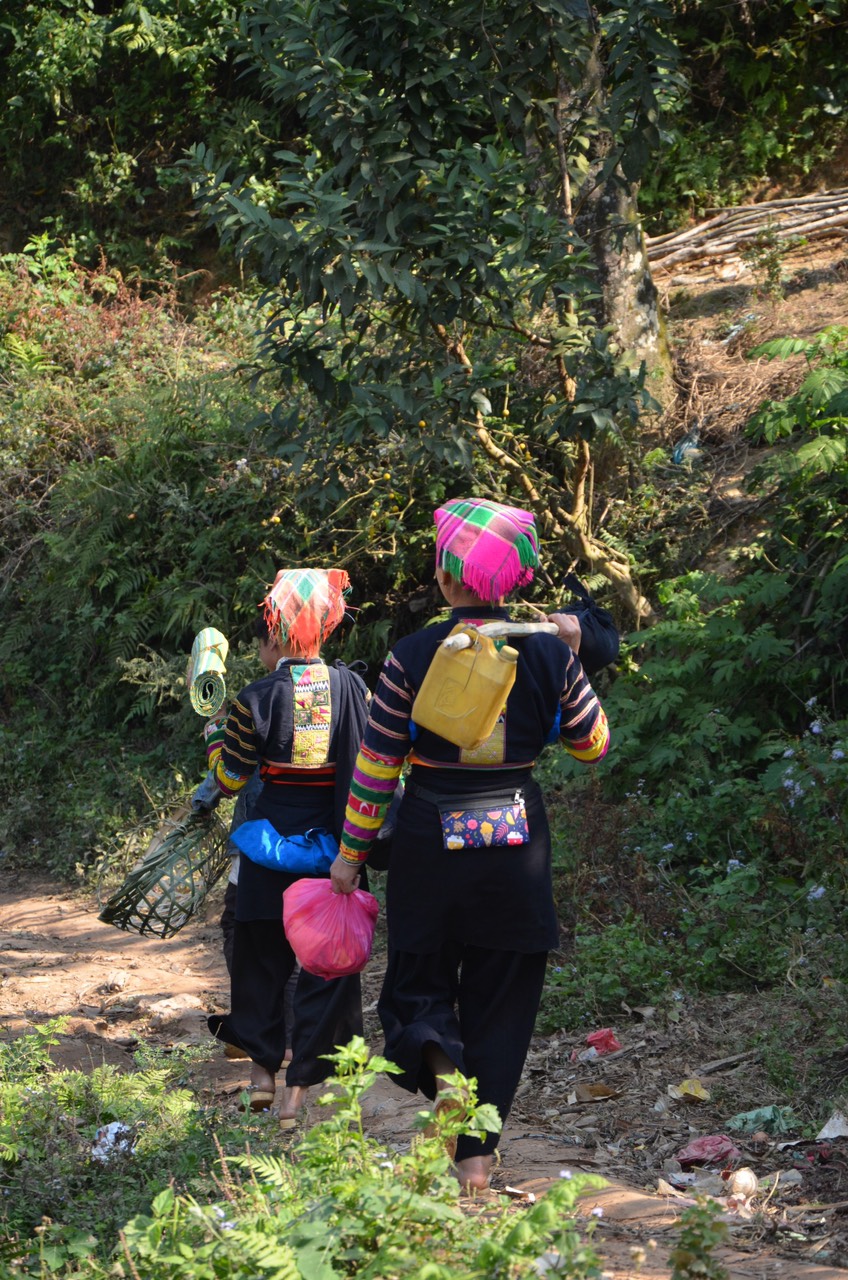
15km from Bao Lac market, is the Khuoi Khon village of the Black Lolo. Nestled at 1200 meters above sea level, this village is home to about 60 households, living almost self-sufficiently from rice farming. The village stretches along a dirt road at the top of a small hill, the houses on stilts are built on the edge and overlook the rice fields below. A walk on this path will lead you to the spring in the middle of the route. It is the privileged meeting place, the Lo Lo women come to take water for the needs of the household, they also do their laundry there. The atmosphere is joyful here, lots of chatter, laughter, children wading happily, some pigs and dogs running free, a real place of happiness! The black Lolo women still wear their traditional clothes, a black tunic with colored ribbons added on the sleeves and the strapless jacket. They also wear a black headdress on a white turban which is quite complicated to put on. Since 2012 a road allows an easy access to this village, some houses can welcome you.
6. The village of Phuc Sen forges
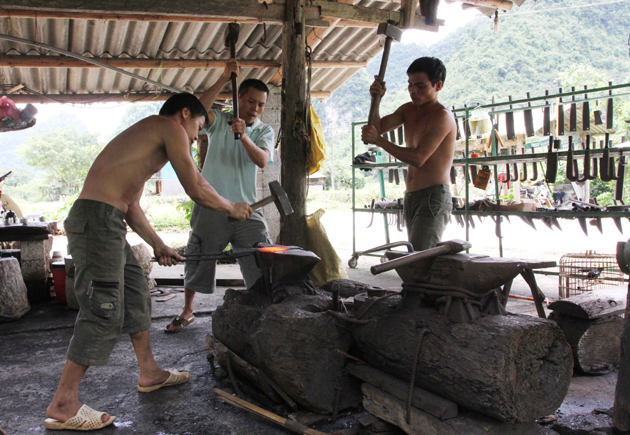
Located 35km from Cao Bang city, on the way to Ban Gioc waterfall, the small village Phuc Sen of the Nung ethnic group is famous for its traditional blacksmithing. From the main road a path lined with corn fields leads you to the village and from far away you can hear the smiths’ tapping. When you visit this village, you can see how people make knives, hammers, sickles and other agricultural tools. Inside the village, you will find almost in front of each house a forge lit, men and women are also in action, the spectacle is surprising, moving, the magnitude of the task and the heart put into this work forces the admiration. The Nung blacksmiths of Phuc Sen have a well established reputation throughout Vietnam. They create works which are references since years, the forge allows them substantial incomes.
7. The village of stone houses Khuoi Ky
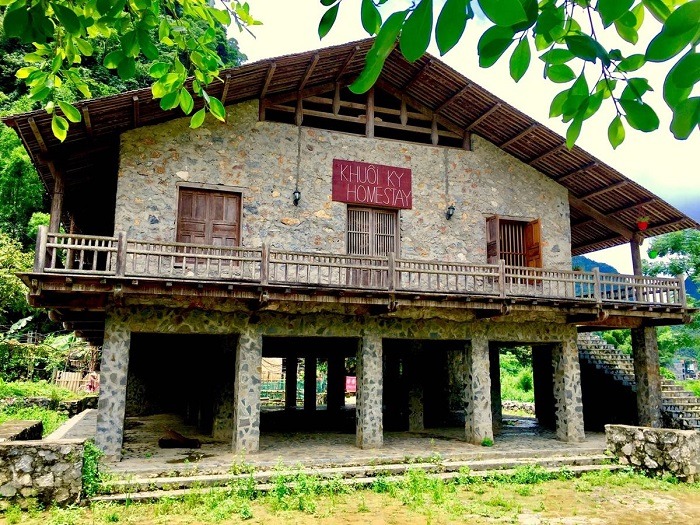
The Tay village of Khuoi Ky is located at the foot of the mountain where the stream flows, about 3 km from the Ban Gioc waterfall. This village has only 14 houses on stilts. All the stilt houses, fences and dams in the village are built of stone, creating a unique fortress-like landscape in this remote border region. This is a site not to be missed when visiting Cao Bang.
8. Phia Thap incense village
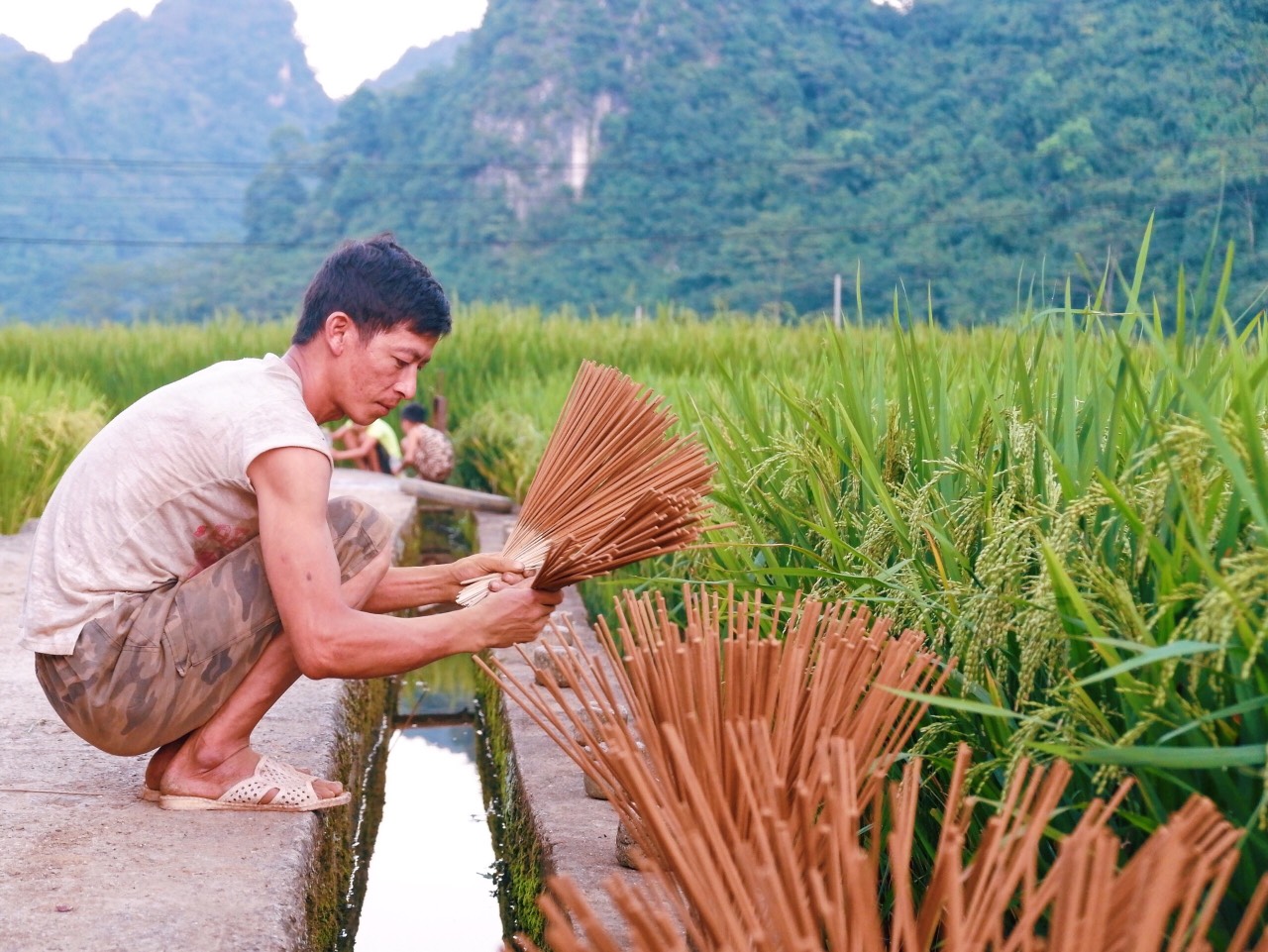
Located in the middle of a landscape of rice fields and mountains in Quoc Dan commune, Phia Thap village is known for its incense stick factory. In Vietnamese culture, incense sticks are considered a link between the world of the living and the world of the spirits. Phuc Sen’s incense sticks are made from natural materials. The sticks are carved from bamboo, apricot or pine wood, then dried, and the tips are coated with a mixture of Bau Hat leaves (an aromatic plant that grows in the forest) and Kapokier bark, all of which are ground to a powder, mixed with sawdust, and made into a paste. Each house is dedicated to this traditional craft in addition to the crops, it helps the villagers to improve their lives. It has become a cultural identity of Nung people.
The magnificent landscapes, the pleasant climate, the cultural richness of the ethnic minorities…make Cao Bang an escape to the heart of nature. So, what are you waiting for to explore this wonderful region.





